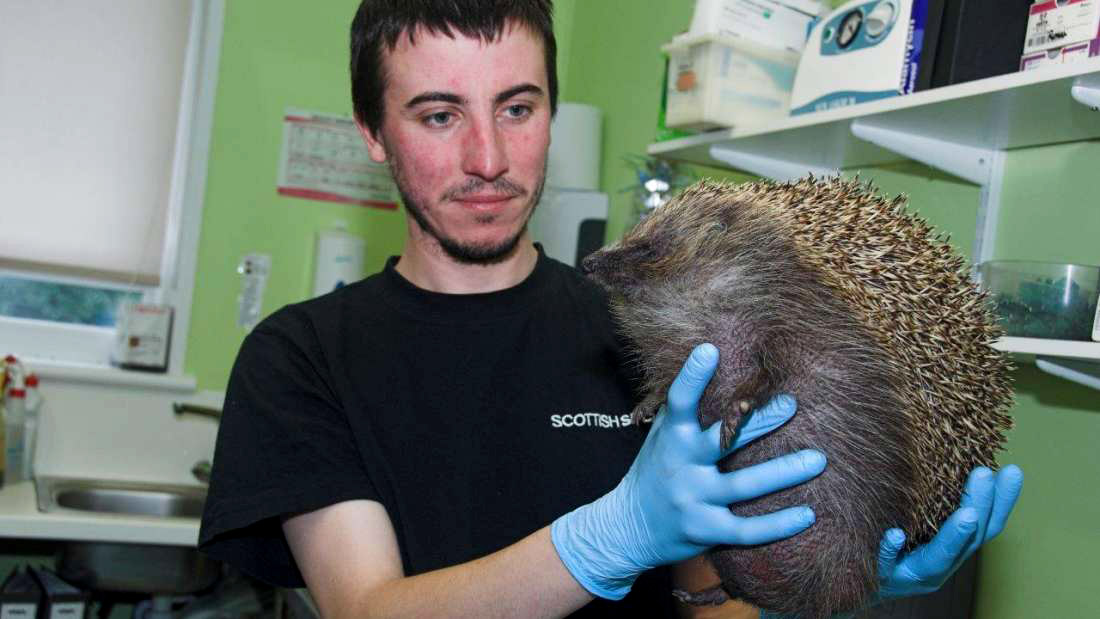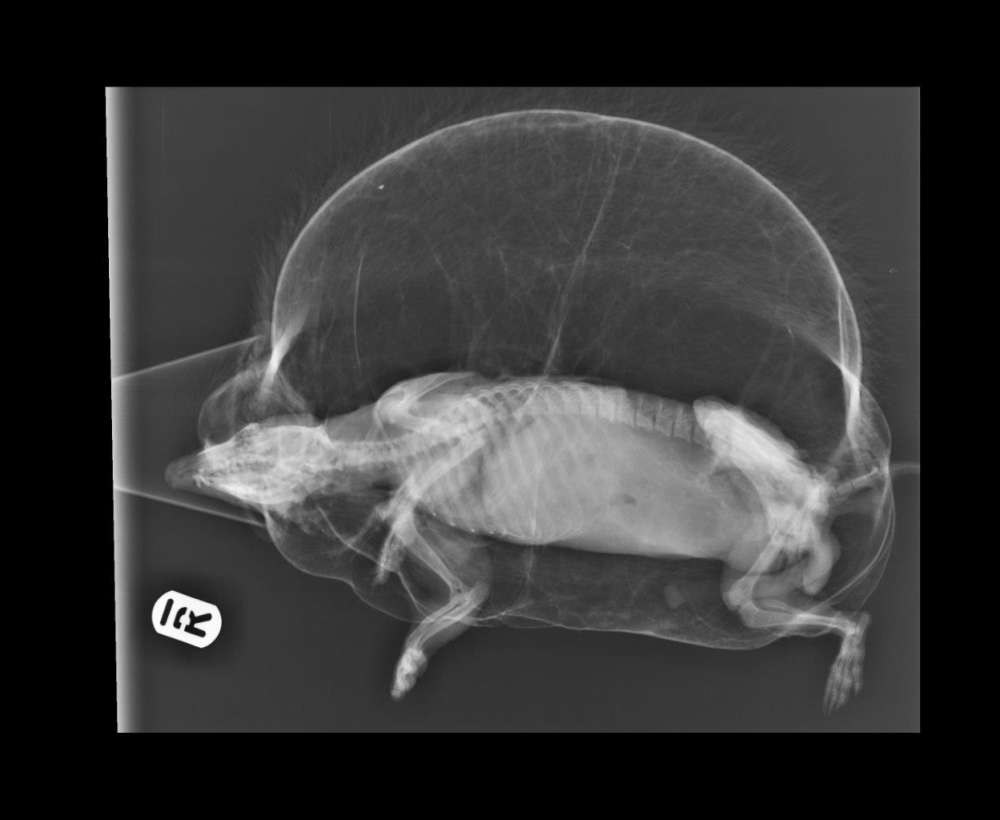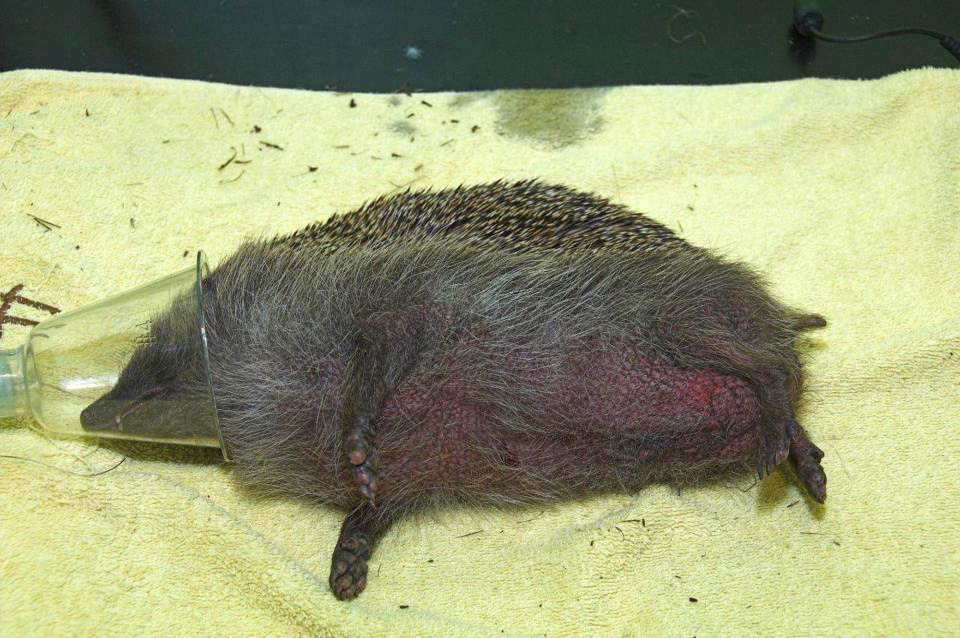Rare 'Balloon Syndrome' Causes Hedgehog to Puff Up Like a Beach Ball
That's what happened to a wild hedgehog in Scotland — named Zepplin by his rescuers at the Scottish Society for the Prevention of Cruelty to Animals (Scottish SPCA) — who was suffering from a rare condition called "balloon syndrome."
Zepplin was spotted by the roadside on July 23 and the Scottish SPCA was called in, according to a statement from the society. [In Photos: Amazing Animal Surgeries]
Romain Pizzi, the specialist wildlife veterinary surgeon at the Scottish SPCA, said that Zepplin's case of balloon syndrome was "so severe."

Scientists have a number of theories about what causes balloon syndrome in hedgehogs, but questions remain because animals with the condition are always found after they've puffed up. "We don't know what happened to this hedgehog," Pizzi said.
In most cases, blunt trauma that causes damage to the lungs is the suspected culprit, Pizzi said. Zepplin may have been hit by a car, or kicked by a horse or human, for example.
Hedgehogs have a little windpipe that runs from their mouth and nose to their lungs, and at the top of this windpipe is the glottis, which opens and closes as hedgehogs breathe, Pizzi said. If a hedgehog is struck when that glottis is open, air simply flows out of the lungs and out of the body. But if the glottis is closed when the animal is struck, that air has nowhere to go, and the lung tissue can rupture. It's like a balloon popping, Pizzi said.
This trauma can also cause damage to the muscles in between a hedgehog's ribs.
Sign up for the Live Science daily newsletter now
Get the world’s most fascinating discoveries delivered straight to your inbox.
The ruptures in the lungs and rib muscles "act like a one-way valve," Pizzi said, so air can flow out of the lungs and into the body cavity — but not back in. So, with each breath the hedgehog takes, a bit of air leaks out, causing the hedgehog to inflate itself.

In Zepplin's case, Pizzi estimated that it probably took between 12 and 48 hours for the hedgehog to inflate to the state he was found in. With balloon syndrome, the injury to the lung doesn't typically kill the animal, Pizzi added. If the injury to the lung is very severe, the hedgehog would likely die, rather than puff up.
And an inflated hedgehog wouldn't survive long in the wild, because it would be unable to roll up and defend itself. [Photos: World's Cutest Baby Wild Animals]
Popping Bubble Wrap
To deflate Zepplin, the vets who treated him did just that — they made a series of small cuts to the prickly patient's skin so the trapped air could escape.
When Zepplin was brought in, he was X-rayed so the surgeons could see if he had severe damage to the lungs. They didn't find any, which suggested the leak was coming from a very small tear.
Pizzi noted that the tissue under a hedgehog's skin isn't designed to be filled with air, so it's not one big open compartment. Instead, there is a lot of connective tissue under the skin, sectioning areas off into little compartments of air.
Though it's called balloon syndrome, in most cases the hedgehogs "puff up more like Bubble Wrap," he said.
Zepplin had four big compartments of air on the top of his body, so the surgeons made four cuts, each about 0.4 inches (1 centimeter) long. To keep infections at bay, the hedgehog was given an antibiotic.

The holes in the skin need to be kept open for a few days while the lungs heal, Pizzi said. If they close up before the hole in the lung closes, the hedgehog will start to inflate again, so the vets need to make sure that scabs don't form over the cuts.
As for the patient's status? Pizzi said Zepplin is doing well and healing quickly.
Originally published on Live Science.











